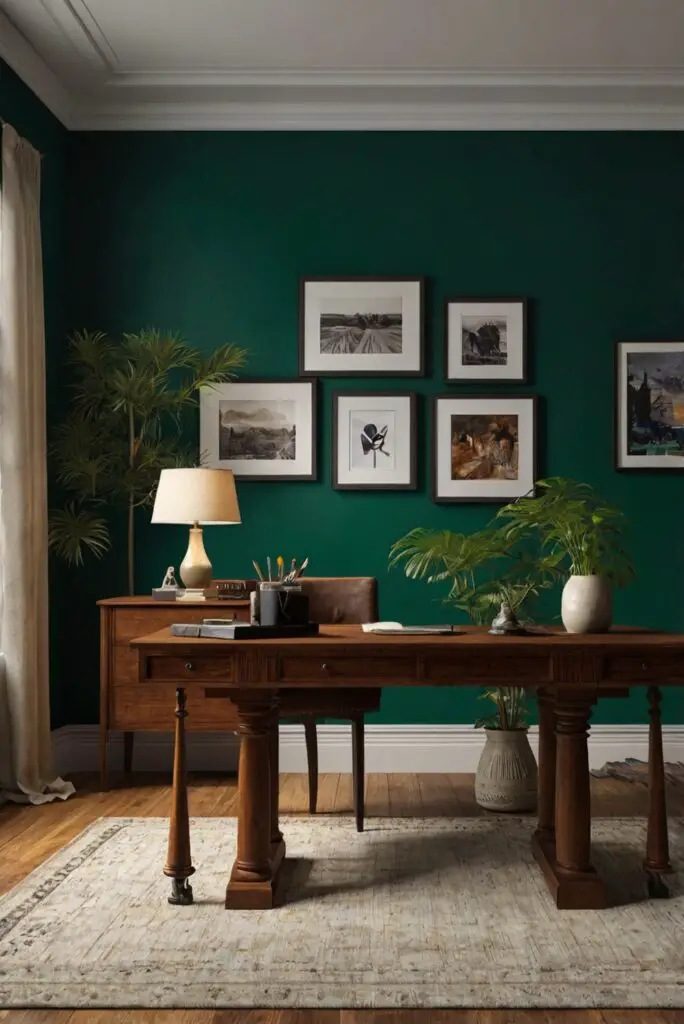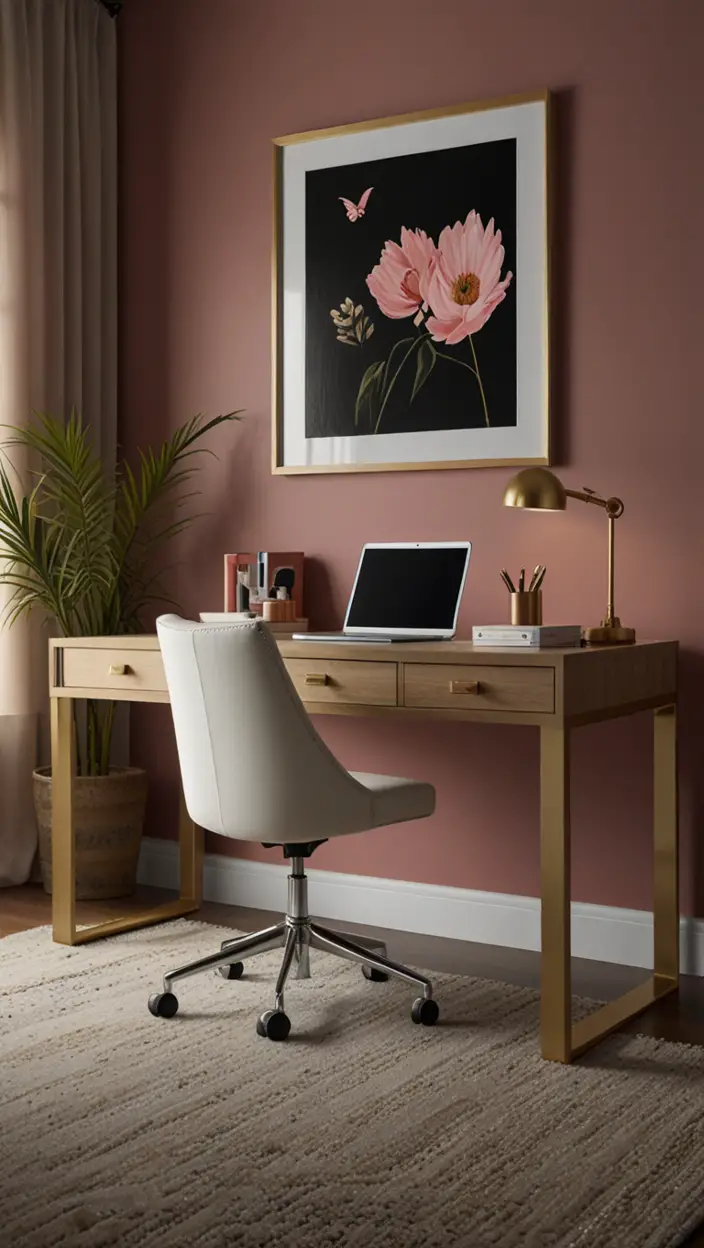Discover how your choice of warm or cool tones can transform your home office. Learn which tones suit your style best.
Warm tones create a cozy and inviting atmosphere in a home office. Shades of beige, taupe, and earthy tones can help to promote relaxation and concentration. To enhance productivity, consider adding pops of color like mustard yellow or terracotta. Cool tones such as blues and greens can evoke a sense of calm and tranquility in the workspace. For a balanced look, mix warm and cool tones through accessories like throw pillows, rugs, and artwork. When selecting paint colors, opt for a neutral base like white or light gray and add accent walls in warm or cool tones for visual interest. Proper space planning is essential for a functional and stylish home office setup.
Determining whether warm or cool tones are better for your home office depends on various factors, including personal preferences, the intended atmosphere, and the type of work you do. Warm tones create a cozy and inviting feel, while cool tones provide a calm and focused ambiance. To decide, consider the following:
My Lovely Spring Paint for 2025
Ready for a Spring Makeover? Explore the Freshest 2025 Paint Trends!
White Sage/Green SW Pistachio green Soft blue Honeysweet/Orange Pink Sugar Sage Tint BMAs an Amazon Associate, I may earn a commission from qualifying purchases at no extra cost to you.
Using warm tones in a home office has several benefits. Warm colors like red, orange, and yellow can stimulate energy and creativity. They can also create a sense of comfort and warmth, making the space more inviting and pleasant to work in. Additionally, warm tones can help in promoting a positive mood and reducing stress levels.
Mixing warm and cool tones in your home office decor is possible and can create a balanced and harmonious look. Incorporating both types of tones can add visual interest and depth to the space. For example, you can use warm tones for larger areas like walls or furniture and cool tones for accents such as artwork or accessories.
Color combinations that work well with warm tones in a home office include complementary pairs like blue and orange or purple and yellow. These combinations create a dynamic contrast that can enhance the overall aesthetic of the space. Analogous colors (those next to each other on the color wheel) like red and orange can also complement warm tones effectively.
My fAV Spring DECOR for 2025
Discover Spring’s Best 2025 Decor Combinations – Perfect for Any Room!
Oversized Indoor Plants White Curved Sofas Rugs BOH Brown Cream Moroccan Hype Boho Rug Outdoor Patio Furniture Sets Topfinel Pillow CoversAs an Amazon Associate, I may earn a commission from qualifying purchases at no extra cost to you.
Choosing the right paint color for your home office involves considering factors such as natural light, room size, and personal preferences. Lighter warm tones like peach or beige can make a small space feel more open and airy, while darker shades like terracotta or rust can add coziness to a larger room. Testing paint samples on the walls before committing to a color can help you visualize the final result.
Incorporating warm or cool tones in your home office decor without painting the walls can be achieved through furniture, textiles, accessories, and artwork. For warm tones, consider adding wooden furniture, soft textiles in shades of red or gold, and vibrant artwork with warm accents. Cool tones can be introduced through metal finishes, blue or green textiles, and abstract art in calming colors.
Organizing your home office space to complement warm or cool tones involves careful planning and coordination. For warm tones, choose storage solutions and desk accessories in matching colors like copper or bronze. Cool tones can be emphasized through sleek and modern furniture pieces in shades of blue or gray. Adding plants or natural elements can enhance both warm and cool tones in the office.
When deciding between warm and cool tones for your home office, remember that personal preference plays a crucial role. Experimenting with different color combinations and textures can help you find the perfect balance that suits your style and enhances productivity. Pay attention to how different tones make you feel and adjust accordingly to create a harmonious work environment.
In conclusion, the choice between warm and cool tones in the home office ultimately depends on the desired atmosphere and personal preferences. Incorporating a balance of warm and cool tones can create a dynamic and visually appealing space that promotes both productivity and well-being. By carefully selecting color combinations, furniture, and decor elements, you can design a home office that reflects your style and enhances your work experience.
**Key Takeaways**
– Understand the benefits of warm and cool tones in the home office.
– Mixing warm and cool tones can create a balanced and harmonious decor.
– Choosing the right color combinations and paint shades is essential.
– Utilize furniture, textiles, accessories, and artwork to add warmth or coolness.
– Organize the home office space to complement chosen tones effectively.






